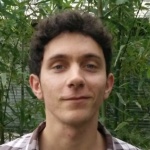Description
The development of numerical models for the simulation of flow and transport processes in fractured porous media is an active field of research, given the importance of fractures in a variety of geotechnical engineering applications such as groundwater management, geothermal energy, or unconventional gas production techniques. Numerous approaches have been developed, which can generally be classified into continuum fracture models and discrete fracture-matrix (dfm) models. While in the first class of models the fractures are accounted for in an averaged sense, the fractures are explicitly captured in dfm models and are often described by means of lower-dimensional geometries due to their small thicknesses.
In recent years, we have developed several dfm models for single-, two-phase, and non-isothermal flow, in which the fractures are described by means of lower-dimensional geometries, and where the flow along them is described on the basis of cross section-average partial differential equations. As a result, a mixed- dimensional system of equations describes flow through the fractured porous medium, with transmission conditions for the mass and energy transfer between the fractures and the surrounding bulk medium. We have used several well-established finite-volume schemes for the spatial discretization of the resulting equations, and have studied and compared them in terms of accuracy and computational efficiency by means of numerical analysis.
This project aims, on one hand, on the further analysis and improvement of the developed models, and on the other hand, on the application of the models to research questions related to integrity issues of underground repositories for radioactive waste. Fractures are introduced in the near vicinity of the repositories upon their excavation, and the question is how the surrounding fractured rock responds to the pressure and temperature increase that is expected to happen as a consequence of the radioactive decay of the waste.
As the host rock surrounding the material is deformable, a crucial phenomenon might be the dilation of fractures in response to the pressure increase, which could give rise to preferential flow paths and a somewhat increased permeability. Recently, we have extended our models to account for the deformation of the porous medium, which is able to capture changes in fracture aperture as a response to changing boundary conditions. In the scope of this project, we would like to improve these models and use them for studying the effect of fracture dilation on the permeability of the rock surrounding potential radioactive waste storage sites.
Project leader
Prof. Dr.-Ing. Rainer Helmig
apl. Prof. Dr.rer.nat Bernd Flemisch
Researcher
Dr.-Ing. Dennis Gläser
Department
LH2
Duration
07/2020 - 12/2020
Contact

Rainer Helmig
Prof. Dr.-Ing. Dr.-Ing. h.c.Emeritus

Bernd Flemisch
apl. Prof. Dr. rer. nat.Professor for Simulation Technology

Dennis Gläser
Dr.-Ing.Departure in February 2024



